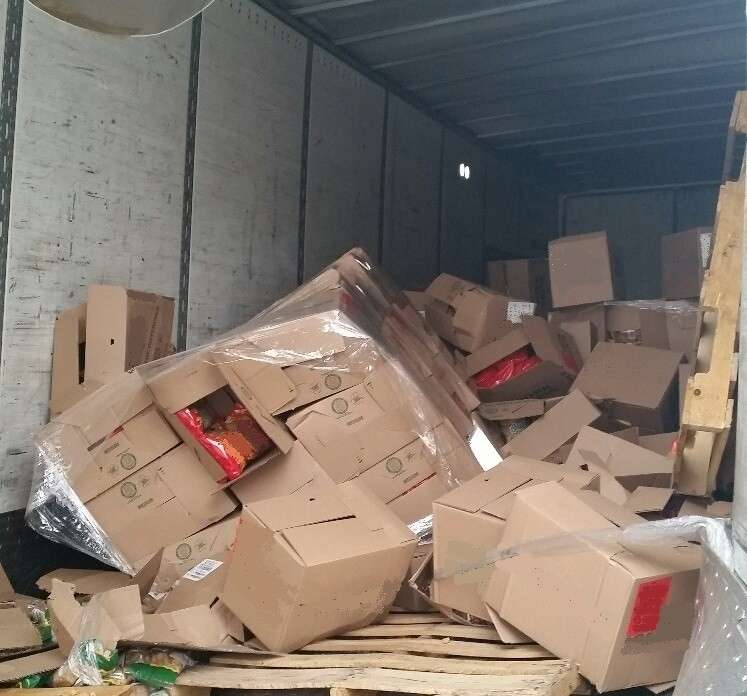Why It Is Important to Make Sure Your Moving Company Is Insured?
June 3, 2024
If you’ve made the decision to relocate, it’s always a good idea to hire a professional moving company to assist you. There are companies that have most likely been in operation for a long time. If you live in a big city, you’ll have a lot of options when it comes to choosing a moving company. When you browse their websites, you’ll notice that the types of services they provide and the prices they charge vary. Let’s take a look at some of the stuff you need to know before hiring a moving company, as well as how to make sure they’re fully insured.
If a moving company isn’t covered and damages anything during the move, they won’t be able to sue you. Many moving companies are covered, which means you can file a lawsuit with their insurance provider to recover the monetary value of whatever was lost. It’s a good idea to keep some kind of record of how much the item was worth, particularly if it was extremely valuable. In the vast majority of situations, getting your money for an object that was damaged or destroyed as a result of the moving company’s negligence is straightforward.

Also Read: How to Move A Piano The Right Way
You can confirm that these businesses are covered by verifying them and checking any policy numbers they have with the insurance company. Once this is verified, you will be able to file a claim and be reimbursed for any losses that have occurred to the goods that they are transporting for you. It can be very difficult to get the money back if you don’t have this insurance. It’s likely that you’ll have to go to a small claims court to get your money back. It simply makes dealing with this type of situation simpler, but in most situations, everything will turn out perfect.
It’s hard enough to move from one place to the next without having to worry about your belongings being destroyed. Simply searching for and finding customer testimonials will help you determine whether a moving company is doing a good job. Choose those with a lot of positive feedback, and once you’ve interacted with them, get estimates on how much it will cost. Finally, the one you select will be the one that not only has the best price track record but also has the requisite protection to cover any and all things that might be damaged or lost.
Related Articles:






Movers Damage Claim: Even if you choose a professional moving company, there are no assurances that your personal possessions will not be lost or damaged during your relocation. Fortunately, there are steps you can do to increase the likelihood that your belongings will be reimbursed or replaced if they are damaged or lost during your relocation.
What is the key? It all comes down to documenting the state of your belongings before and after the move, as well as filing a formal movers damage claim.
Start by compiling a list of all of your possessions in one location. Make a few copies of this list for yourself and your movers. This will allow you to keep track of which items were misplaced or did not arrive at your new location.
To go with your home inventory list, create an album with images of your assets. Make a date and time stamp on these images. If your belongings are nicked, scratched, or smashed during the move, this can assist you to show damages during the moving claims procedure.
If you file a claim with your moving company, the claims adjuster will want to see the state of your damaged belongings prior to the transfer. Without this picture evidence, your case will be weaker.
If you want to secure your belongings, the basic coverage that moving companies are obligated to give by law won’t go you very far. Obtain additional coverage or purchase a separate moving insurance policy. This will increase your moving costs, but it will be worth it if your belongings are damaged or destroyed.
Full-value protection is the most complete and costly sort of insurance. Your movers will either compensate you for the full current worth of your items, repair your damaged items to their original state, or replace your damaged or lost items with new ones under this coverage.
If you’re transporting more valuable products, it might be worth it to pay a little extra for full-value insurance. This is the most effective strategy to ensure that you are adequately compensated if these products are damaged or lost.
If you didn’t buy full-value insurance, your moving company may only refund you for a portion of the cost. If you merely got “released-value” insurance, for example, your movers will value your belongings at 60 cents per pound. Your movers will only refund you 60 cents for each pound your flat-screen TV weighs if it is destroyed during the transfer.
Also Read: How to Pack your Flat Screen TV for a Move
Your movers should present you with an itemized list outlining the things they moved and the condition in which they arrived on moving day. The bill of lading is what it’s called. Take a good look at this list. Make a note on the list if the moving company scratched your furniture when moving or if something is missing. If you need to file a claim with your movers, this will provide extra evidence. Make a note of any items that were misplaced during the move.
It doesn’t imply you can’t file a claim if you don’t indicate the damages on the form. Documenting your concerns on the bill of lading, on the other hand, can strengthen any claim you make.
You’ll get a resolution faster if you file quickly. You have nine months from the date of your move to file a claim, according to the Federal Motor Carrier Safety Administration. And you must file your claim on your own. Do not rely on the movers to file your insurance claim on your behalf.
The first step is to call your moving company and request official claim papers. All movers will be required to fill out such papers, and there will be a formal complaint procedure in place.
Make a note of the broken objects on your movers’ documentation. Make a note of any damage to your new home as well. If your kitchen walls were scraped or your bedroom floor has divots, make a note of it. Damage to your home is the responsibility of the moving provider.
Once again, photographs are your best friend. Take as many photos as you can of your damaged things and submit them with your complaint. Include any images you took before the move of these goods. This is an important component of recording the damage to your belongings or residence.
Keep in mind that movers aren’t usually responsible for damage to anything within boxes you packed yourself. What if the plates you packed in a box break when they arrive at your new home? If you packed that box yourself before the transfer, you won’t get paid.
The claims process begins once you’ve completed the paperwork and sent it in. In most cases, your movers will appoint a claims adjustor to look over your complaint. After you register your complaint, you should receive a reimbursement offer from the moving firm within a week.
Accept your moving company’s offer if you’re happy with it. Inform your movers if this is not the case. They could make a counter-offer. If they don’t, and you’re still unhappy, you can launch a civil case to get your money back. This can be a time-consuming and expensive operation.
Note: Interstate movers, or those who relocate from one state to another, are required to participate in an arbitration program. If you and your moving company can’t agree on reimbursement or replacement of damaged items, your claim will be heard by a neutral arbitrator under this program. The decision of the arbitrator will then be definitive. This is frequently the least expensive method of resolving a disputed claim.
You can also register complaints with the Better Business Bureau, the United States Department of Transportation, and the American Moving and Storage Association if you are dissatisfied with your movers’ settlement offer.

Also Read : Best Interstate Moving and Storage of 2021
You and your moving company will work out a schedule for when the movers will pick up and deliver your belongings. Your movers may use the term “delivery spread” to specify the period in which you may expect your belongings to be delivered to your location.
It’s critical to include specific dates in your contract. Don’t just say “as soon as possible” when you want your products delivered. You can make a claim for delay-of-shipment if your mover fails to pick up or deliver your belongings on the dates stated. You must show that the delay resulted in expenses that you had to cover.
You want everything to go as smoothly as possible throughout your relocation. Documenting your belongings before and after your transfer is the best method to ensure this. This way, if your furniture, electronics, or kitchenware are damaged by movers, you’ll have the proof you need to undo the damage.
Related Articles:






What Is a Moving Valuation And How Does it Work? Moving is stressful enough on its own, but when you hire a reputable moving company to move your belongings with care, you lessen your anxiety for any home or commercial relocation. You may have heard some movers advertise that they are “insured” if you have been calling around to a few.
When you hire a legal, licensed moving company, you’ll be given a few different valuation options to choose from, allowing you to get the coverage that best suits your needs.
So, what exactly is moving valuation, what does it cover, what doesn’t it cover, and is it worth it to have complete value protection for your move?
Moving valuation is simply insurance for assets that are lost, destroyed, or damaged during the moving process. This is the carrier’s maximum liability level. When transporting household goods from one home to another, the federal government mandates that all licensed moving companies provide two levels of security for the value of the items they transport.
The term “full replacement value” refers to a more expensive option that provides more protection. This option covers your belongings for their current replacement value, depending on a value of $3 per pound and a minimum shipping value of around $3,000. To calculate the carrier’s maximum liability in the event of loss or damage, multiply the weight of your shipment by $3. So, let’s assume you’re shipping a 5,000-pound consignment… The carrier’s maximum loss or damage responsibility will be $30,000.
This appraisal normally costs between 5% and 6% of the total weight of your package.
To be clear, valuing something is not the same as insuring it. However, many movers provide insurance coverage in addition to the federal government-mandated valuation alternatives. The fees and amounts of coverage included in these policies are determined by the state you live in as well as the policy of the individual moving business.
Also Read: Moving Artwork – How to Move a Masterpiece?

If you’re moving things with a high value, you’ll want to disclose the whole value of your shipment. Consult your mover about the various valuation alternatives. Keep in mind that the moving company’s liability for high-value objects is restricted to $100 per pound unless you notify the mover in writing prior to the relocation that such items will be included. If you don’t indicate a value on your consignment, the mover’s maximum liability is restricted to $6 per pound multiplied by the weight.
Released valuation, also known as “basic carrier liability,” indicates that everything lost or damaged during the move must be reimbursed by the moving company at 60 cents per pound per object. So, while the company is accountable for lost or damaged products, it doesn’t cover nearly enough to cover the real value of the items. The “released valuation option” is included in most moving companies’ base prices at no extra charge to the customer.
Always examine your homeowner’s insurance policy before acquiring any coverage from the moving company. Your policy may include riders for relocation protection, depending on the level of homeowner’s insurance you have and the provider. Alternatively, they may offer independent relocation coverage that is far more affordable than what you may acquire through the moving company.
It all boils down to the value of your relocation and your goods, as well as your willingness to take risks. For a typical move, most individuals don’t need a moving valuation, but if you have high-value things, it can’t hurt to have an extra level of protection.
Contact us to learn more about moving valuation and to schedule your move.
Related Articles:





